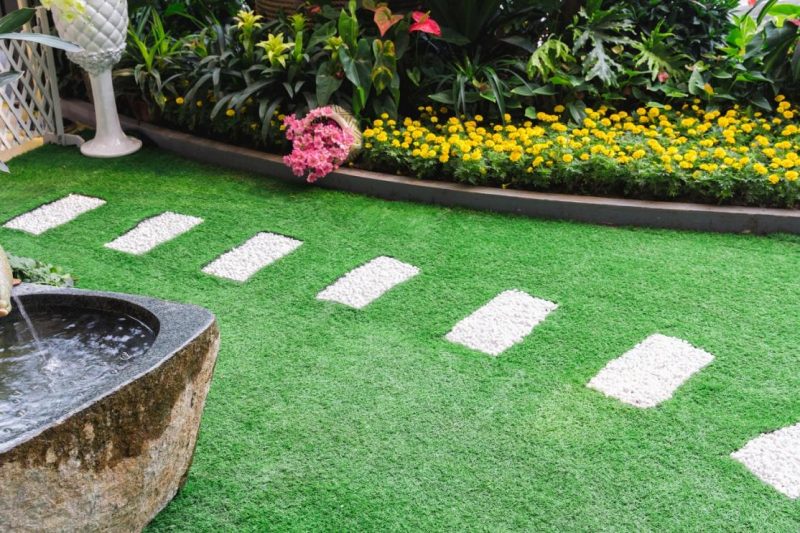More homeowners are leaning towards maintenance-free faux turfs for their yards, according to landscapers.
Architect Christopher Brandon of Brandon Architects in Costa Mesa, Calif., told The Wall Street Journal that about 75% of the projects he does for modern-style homes now ask for artificial grass. Since faux turf does not require water and the green stays vibrant all year long, there is virtually zero maintenance. Brandon says he likes to do a mix of the artificial grass with real plants surrounding it to blur the lines between fake and real.
Homeowners in Napa Valley told WSJ they spent $60,000 on a synthetic lawn for their 3,600-square-foot parcel of land. “[Real] grass is messy,” homeowner Hillary Ryan, also a real estate professional, told WSJ. “We paid six times more to have the faux grass installed.” The turf can thrive in drought-prone places like California, and the lawn can withstand sports activities from their school-age children, Ryan says. They paired their faux turf with native, drought-tolerant real plants.
Natural grass is priced at less than $2 a square foot for initial landscaping, but it requires mowing and maintenance, Tommy Beadel, co-founder at Thomas James Homes in Aliso Viejo, Calif., told WSJ. Beadel is a custom home builder that installs synthetic and natural turf. High-end synthetic grass, on the other hand, can cost $11 to $19 a square foot. Troy Scott, owner of Heavenly Greens in San Jose, Calif., says the synthetic grass can save homeowners in the long run.
Synthetic lawns can last up to 20 years, and the only maintenance required is attending to the occasional pop-up weed.
Luxury owners and landscape designers used to think very negatively about faux lawns, but more high-end homeowners are warming up to the trend. Most of the negative perception about fake yards is because the faux products offered to homeowners were the same ones used on sports fields. Synthetic lawns nowadays are a combination of nylon, polyethylene, and polypropylene, and tend to have better drainage, stay cooler in the sun, and feel softer. New fake lawns look more like regular grass from pigment variation that mimics the color of natural grass, WSJ reports.
“Even the mention of the word fake sends peoples toes curling,” Grahame Hubbard, a New York-based landscape designer specializing in terraces and rooftops, told WSJ. Sometimes faux grass takes some convincing, so Hubbard shares photos of his work via Instagram using hashtags like #syntheticlawn to sell potential clients on their low-maintenance options, which include turf.
Source: “Home Turf: Faux Grass Delivers the Green Without the Fuss,” The Wall Street Journal (July 18, 2019) [Log-in required.]













